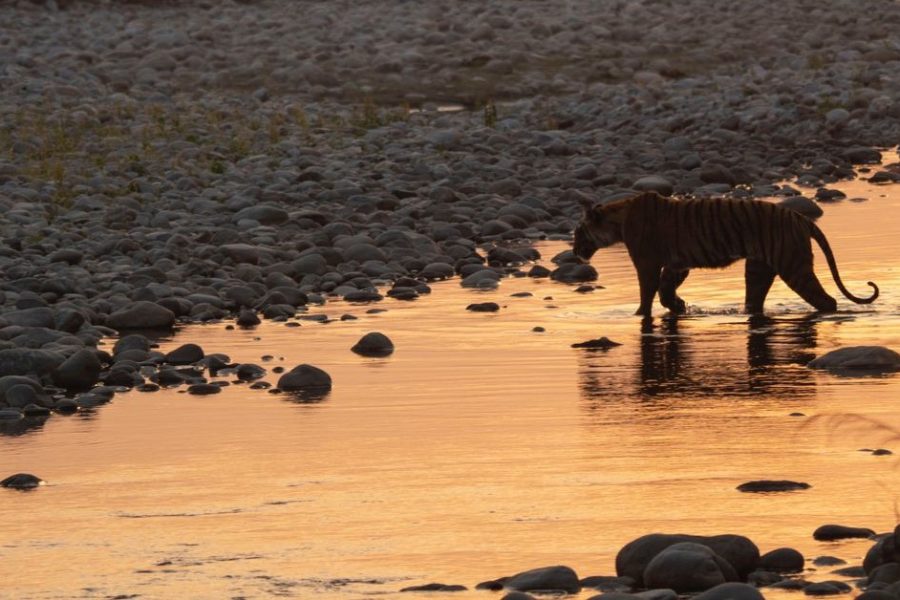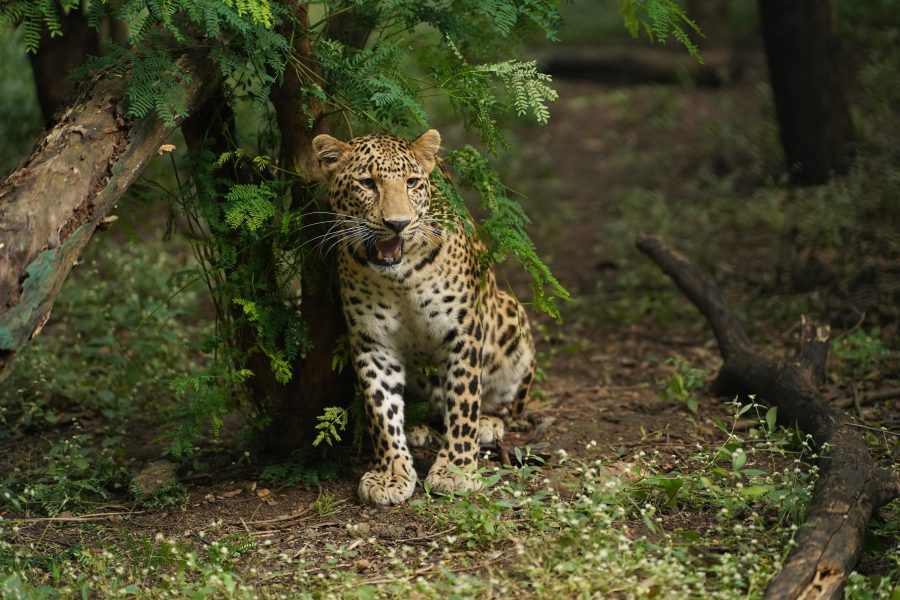In July and August, the roads and streets leading to temples begin to be dotted by men dressed in saffron clothing with colourful baskets laid out in the front. Their decorated flutes, called pungi, are ready to be played to ‘charm’ the serpent beings laying low inside their baskets. The same scene has been replayed for generations to attract devotees that flock in large numbers to the temples during the month of shravan, the auspicious fifth month of the Hindu Calendar, that celebrates Lord Shiva. Snakes play an important role in the celebration due to their mythological association with Lord Shiva, who is often depicted wearing cobras around his neck, arms and ankles. However, this holy association often masks the cruelty meted to snakes for the sake of traditional beliefs.
It is believed that in order to save the universe from being destroyed, Shiva drank poison and kept it in his throat, which turned blue. A few drops that fell into the ocean were drunk by snakes. Together, they prevented the universe from collapsing. This gave birth to the holy reverence of snakes, and as such snake charmers, too, were respected as men of gods. Members of the sapera or sapuakela caste widely practised this tradition, which was passed on from father to son. With their generational knowledge of snakes, snake charmers also doubled as the first point of contacts in villages and towns for cases of snake bites. Commonly captured snakes include Spectacled cobras, Indian rock pythons, red sand boas, common sand boas, rat snakes and royal snakes. Today, snake charmers are seen as little more than nuisances and lead a nomadic existence to avoid contact with lawmakers. This has largely been due to two reasons, firstly, the growing awareness about snakes; and secondly, the inclusion of all Indian snake species into the Schedules of Wildlife Protection Act, 1972 that makes capturing of snakes a criminal offence. With no other choice of profession due to the stigma attached to their caste, saperas risk prosecution and venture out in large numbers during shravan to act as instruments for people to practice their superstitious beliefs.
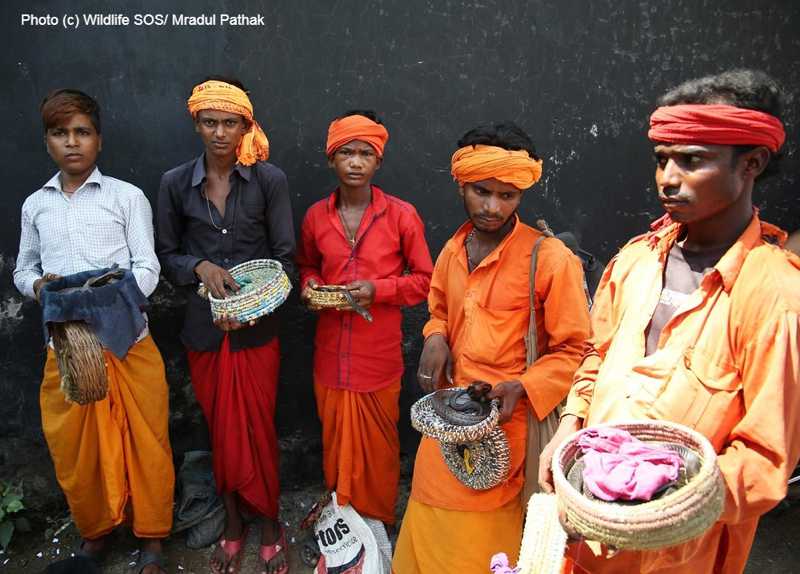
To a layman, with little or no knowledge about snakes, the act of snake charming is simply about the ‘skillful’ control that a sapera has over its snake. The snake charmers too dramatize the act for commercial gains, often at the cost of the well-being of the animal in their care. When a snake charmer opens the basket, the snake instantly emerges. Once the snake erects its body, the snake charmers begin to play the flute which the snake seemingly follows. People also marvel at the fact that the snakes do not bite in retaliation. This act can easily be debunked by understanding the naturalistic behaviour of snakes. A snake simply erects itself when the hood of the basket is removed due to the sudden exposure to light. Similarly, a snake does not follow the tune of the music but the direction of the snake charmer’s hand. Furthermore, as snakes only have vestiges of an inner ear, they are able to pick only a few low-frequency airborne sounds. Most snake charmers sit beyond the biting range of the snake. Moreover, snakes are timid beings and are reluctant to attack. Venomous snakes such as cobras avoid biting in retaliation as reproducing venom is an energy-intensive process. As people grossly misunderstand and have a negative portrayal of snakes, such perceived domination is prized by them and treated as a special gift.
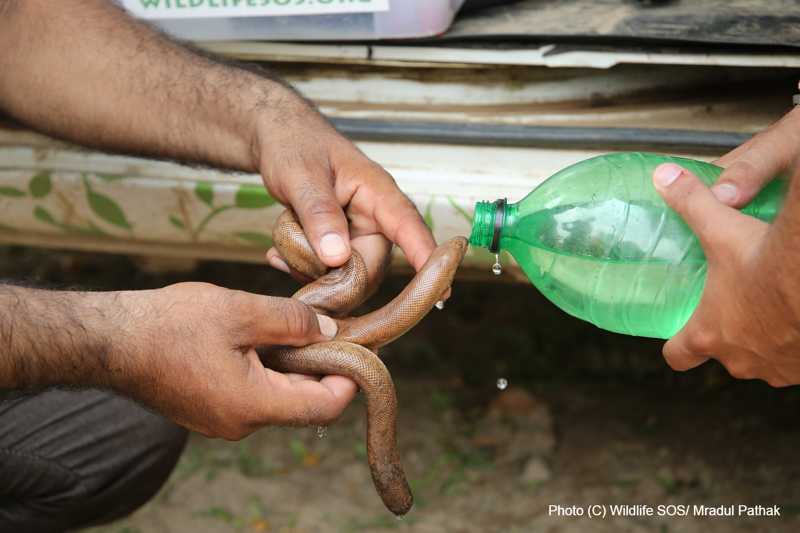
Snake charmers desperate to maximise their profits often resort to abusive measures to establish full dominance over their snakes, to appease the devotees. Snakes are often starved for months on end, and in certain cases, they are never fed since the time of their capture. Some snake charmers even cruelly stitch shut the mouth of the snakes, completely preventing them from eating. All this is done to feed to the myth that if a snake drinks the milk that one offers, good luck will befall them for the rest of their life. This is extremely cruel to the snake! As a result of being completely starved, snakes will simply drink the milk to hydrate themselves. Due to their inability to digest milk, snakes never actively seek out milk. Venomous snakes suffer an even worse fate as they are brutally defanged. Sometimes, their venom glands are poked out with a sharp stick, leaving wounds that can become infected and eventually cause death. It is routine practice to replace the dying snakes by catching new ones from the wild, instead of taking good care of them. The unshakable belief and monetary incentives from devotees keep this brutal practice afloat.
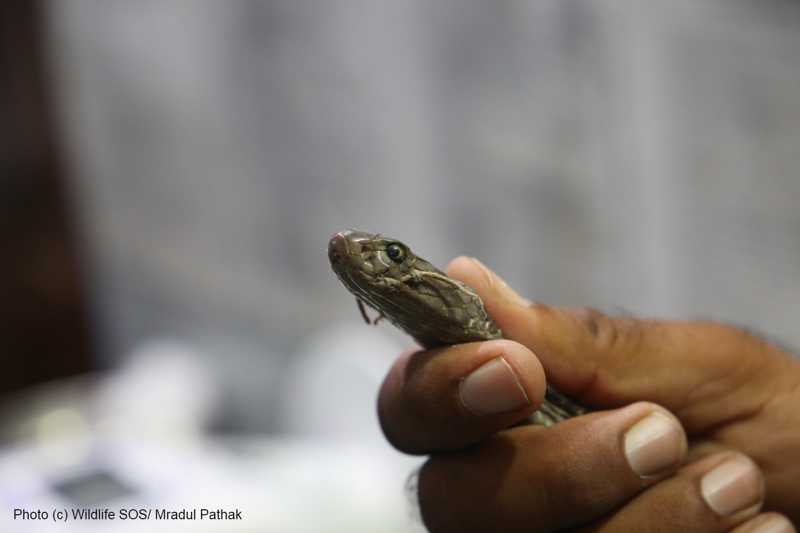
Every year during the month of shravan, our anti-poaching team based in Agra maps the nearby Shiv temples to carry out their anti-poaching drives with the help of the Uttar Pradesh Forest Department. Mondays are especially considered to be auspicious when devotees fast for good luck and flock to Shiva temples thereafter. As such every Monday, our team, comprising of reformed poachers, carefully plans a trip to these mapped temples and conduct snake seizures from the saperas. This year spanning across 4 seizure drives, the team rescued 111 such captured cobras, Indian rock pythons, red sand boas, common sand boas, rat snakes and royal snakes. All rescued snakes were kept under observation and assessed by our veterinary team. A large number of snakes were found to be dehydrated and exhausted, which were carefully taken care of by the team. Stitches of several snakes too were removed to enable them to drink and eat. All snakes once deemed fit were released into the wild again.
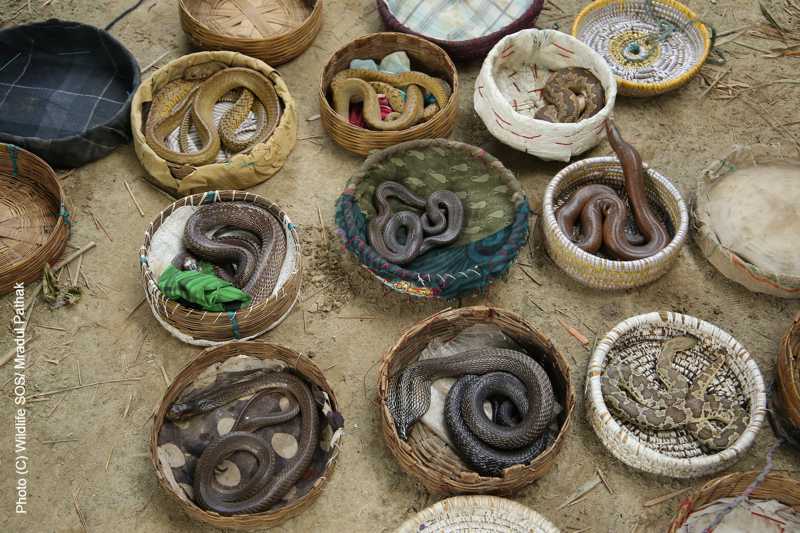
The practice of snake charming defies modern times and still exists due to several intersecting reasons such as lack of other opportunities for the saperas, unshakable religious beliefs and exoticization of the practice. In the coming years, our team hopes to see a fall in the number of snakes they seize from snake charmers. Wildlife SOS urges locals and tourists to avoid falling prey to the lure of beliefs and incentivising cruelty of animals and capture of protected wildlife.

